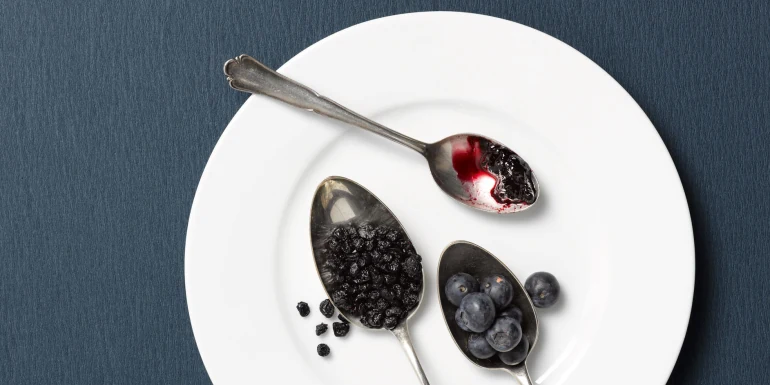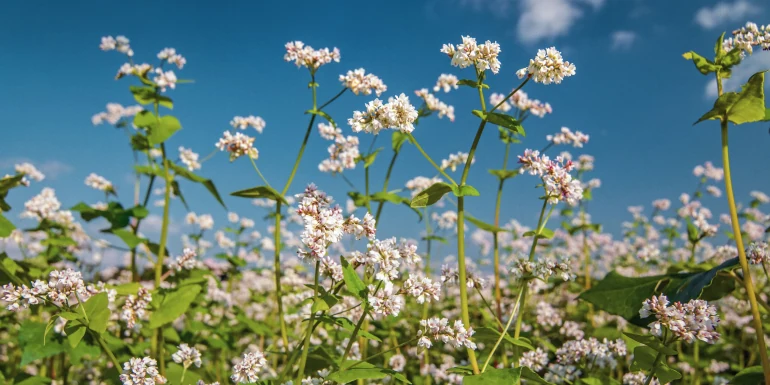
Basic food with healing powers: oats
Oat nourishes an exhausted nervous system, detoxifies the body and lowers excessive cholesterol and blood glucose levels. It calms itching skin and ensures a restful sleep.
Oat is not only a healthy and satiating food, but also a therapeutic product. Its therapeutic effect has been known since the Middle Ages. Herbalists such as Matthiolus or Lonicerus wrote then: "Used as food, it is a wonderful medicine for daily digestions, provides great sustenance, helps against mange [skin disease], stops red diarrhoea and dysentery [gastrointestinal disorders] and rids the body of unwanted water, same as of all other detritus [rheumatism, kidney stones, gout]."
As a food plant, oat has been known since about 5000 BC. The earliest evidence has been found in the Black Sea region and in Poland. In Central Europe, it appeared only later, in around 2400 BC. Oat found in pile dwellings on the Swiss shore of Lake Constance are seen as the earliest evidence of its cultivation. It is likely that the meadow grass used to grow wild in barley and wheat fields, before it was itself cultivated as a cereal.
Let's eat ourselves healthy!
Oat provides us with energy in a variety of forms: as a herb, as straw, as bran or as fruit. Oat herb consists of the above-ground green parts of the plant harvested just before full bloom They contain silicic acid, flavonoids, triterpenoid saponins, potassium salt and vitamins B, E and K. The small quantity of indole alkaloid gramine is said to be responsible for the nerve-calming effect. Oat tincture is relaxing, oat tea has a diuretic effect. The latter is traditionally taken for rheumatism and gout or for flushing out the kidneys and kidney stones.
Oat flakes («oats») produced by pressing the fruits, i.e. seeds, contain vitamins of the vitamin B group, proteins as well as traces of magnesium, zinc and iron in addition to complex polysaccharides. The polysaccharides have a low glycaemic index which is why eating oats prevents ravenous binge eating. Oat straw is the choice for bathing: it contains silicic acid and triterpenoid saponins. These components ease inflammations of the skin and make the skin feel pleasantly soft. Neurodermatitis sufferers and those with weeping skin disorders and pruritus are recommended two or three baths per week.
Relaxation for the mind
The seeds as well as the bran have been proven to lower serum cholesterol levels, increase digestion-promoting gut bacteria and help against bloating. Thanks to their high fibre content, oats lower elevated blood sugar levels, promote the circulation of intestinal mucous membranes and ensure regular bowel movements. Oat herb in form of a tincture helps against anxiety, tension and disquiet and alleviates nervous itching. Oat tincture has an antianxiety effect to support smoking cessation or the gradual therapeutic withdrawal of strong painkillers such as morphine. For this purpose, 5-15 drops are taken several times a day.
Power bar recipe
Ingredients for 5 bars
- 120 g of oats
- 60 g of sunflower oil
- 60 g of honey
- 20 g of popped amaranth
- 15 g of linseed, poppy seed or sesame
Preparation
Mix the oats with the oil and honey. Add the amaranth and linseed and put the mixture into a rectangular baking tin. Press together firmly. Bake in the oven at 200 °C (fan oven) for 15 to 20 minutes until golden brown. Cut into pieces while still warm and allow to cool. Stored in a dry location, the bars keep for 3 weeks.
Family
Graminae (Poaceae)
Appearance
Oat is a meadow grass that germinates afresh every year. The stalk is hollow, roundish and upright. In contrast with other cereals, the seed head forms a panicle and not an ear. The fruits (seeds) hang down from the tip of the stalk. Oat forms long lancet-shaped leaves. Its colour is blueish-green. For that reason, a wind-blown oat field is always reminiscent of the sea.
Location
As a cultivated plant across all of Europa
Botanical classification
Oat is an annual herb.
Harvest time
Depending on strain and location between July and September. The herb refers to the above-ground part when flowering. The mature seeds are dehusked and dried. Then they are either used as the whole grain or pressed as oats. The dried above-ground plant without the seeds is oat straw.
Use
Herb (Avenae herba): tea, tincture, original mother tincture or powder
Oat straw (Avenae stramentum): For a bath, simmer 50 to 100g oat straw in 1 L water for approx. 30 minutes, then add to bath water. Duration of bath: 10 to 15 minutes, 1 to 4 times a week
Fruits (Avenae fructus): Oats as power food, for the dietary control of cholesterol and blood sugar levels and support of the intestinal flora
Oat bran (Avenae furfur): for digestion regulation



Newsletter
Find out more about current health issues every month and get all the information you need about our attractive offers from all Helsana Group companies * delivered by e-mail to read whenever it suits you. Our newsletter is free of charge and you can sign up here:
We did not receive your information. Please try again later.
* The Helsana Group comprises Helsana Insurance Company Ltd, Helsana Supplementary Insurances Ltd and Helsana Accidents Ltd.